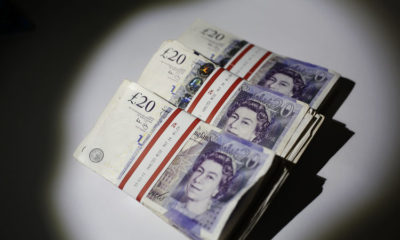Stock markets have stabilized a little after Tuesday’s rout which saw risk assets pummelled across the board.
There appears to have been a tendency in recent months to front-run certain releases in the hope that it’s going to prove to be the “pivot” moment when everything starts to look up, central banks can ease off the brake and risk assets will have bottomed. That certainly looks to have been the case over the last week as investors were lured into a false sense of security following the July CPI release only to be brought back down to earth with a bang with the August report.
Unfortunately, 2022 has delivered some harsh truths when it comes to inflation and yesterday was the latest in that series. The run-up to the peak was far more aggressive and severe than anyone anticipated and, it would appear, the move back towards 2% is not going to be easy either.
Markets are now fully pricing in at least a 75 basis point rate hike next week and almost a 40% chance of it being 100, a far cry from the 50 investors were hoping to see following that CPI data. Not only that, the policy rate is expected to peak at 4.25-4.5% early next year and if the data doesn’t improve soon, that will increase further. Despite the economy’s resilience to this point, a recession may still be on the cards as the tightening cycle potentially pushes it over the edge.
BoE seen hiking by 75bps even as inflation eases
UK inflation is back into single digits, with the headline rate falling back to 9.9% last month. That’s not exactly cause for celebration, nor is it likely the peak, but you have to take your wins where you can these days. And as we’ve already learned once this week, nasty inflation surprises are not yet a thing of the past, with the UK looking more susceptible to them than most.
The data also won’t in all likelihood change the outcome of the BoE meeting next week, with 75 basis points now heavily backed but 50 also possible. The UK still has a major inflation problem and the central bank has a lot of catching up to do after dragging its feet for much of the year so far.
A lot of talk and a little bit of action
The FX intervention warnings are coming thick and fast since the release of the US CPI data on Tuesday, which saw the dollar surge and come within a whisker of 145 to the yen. The move reportedly prompted the BoJ to conduct a rate check overnight, widely seen as a precursor to intervening in the markets for the first time since 1998. Since then, the USDJPY pair has fallen well back towards 143 and we’ve been flooded with warnings of urgency and willingness to act. The line in the sand has been drawn and speculators may now feel that 145 is viewed in Japan as a step too far. With the Fed and BoJ meeting in the middle of next week – among many others – it promises to be a fascinating seven days.
PBOC desperately trying to support the yuan
It’s not just Japan that’s fretting about the weakness of its currency, the PBOC set the yuan fix at its strongest bias on record versus expectations. The move is the latest in a series of attempts to stabilise the currency against fierce headwinds while at the same time attempting to ease financial conditions at home. The road ahead is full of potholes for the world’s second-largest economy and confidence is continuing to deteriorate.
A still uncertain outlook for oil demand
Oil prices suffered alongside risk assets on Tuesday, albeit to a much lesser extent, with the threat to the US economy of much higher interest rates a downside risk. Of course, it’s yet another risk that I’m sure OPEC+ will be keen to stress it would adapt to in its desperation to ease market volatility and keep prices high.
The oil price is a little higher after the IEA monthly report which claimed oil use for power generation will hit 700,000 barrels per day, while at the same time indicating that demand growth will halt in the fourth quarter before rising by 2.1 million barrels per day next year. It, therefore, lowered its forecast for world oil demand growth this year by 110,000 BPD to two million while warning of downside risks including the faltering Chinese economy and a slowdown in OECD countries. Ultimately, the outlook is heavily subject to revisions given the still rapidly evolving environment.
A nervy week ahead
It won’t come as a surprise to anyone that gold went into freefall following the US inflation report as it became clear that the Fed is in no position yet to ease its foot off the brake. Suddenly the yellow metal is looking down rather than up, with $1,730 remaining strong resistance to the upside but $1,680 now very vulnerable. It’s going to be a nervy week for gold bulls.
Will the Ethereum Merge support crypto prices?
Bitcoin was probably at the top of the list of instruments that got carried away at the prospect of fewer rate hikes ahead of the CPI data and it, therefore, got hit the hardest when the number dropped. Of course, there are other things happening in the crypto space right now with a huge focus on the imminent Ethereum Merge, with some suggesting that may have contributed to the rebound we’ve seen. Of course, that could equally compound the sell-off if it becomes a “buy the rumour, sell the fact” event. Time will tell.


 Forex2 weeks ago
Forex2 weeks ago


 Naira1 week ago
Naira1 week ago
 Naira4 weeks ago
Naira4 weeks ago
 Company News4 weeks ago
Company News4 weeks ago




 Naira1 week ago
Naira1 week ago
 Billionaire Watch1 week ago
Billionaire Watch1 week ago




 Naira3 weeks ago
Naira3 weeks ago




 Naira1 week ago
Naira1 week ago




















